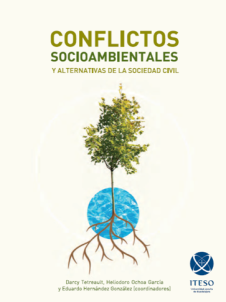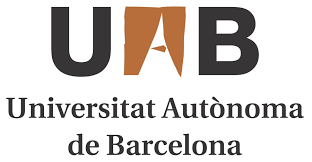
By Isabel Cárdenas*
“Conflictos socioambientales y alternativas de la sociedad civil”, presents an excellent overview of socio-environmental conflicts in Mexico. The multidimensional analysis of asymmetrical power relations includes a chapter by Fernanda Paz that quantifies, maps out and analyzes these conflicts on the national level, as well as case studies of diverse conflicts in the central western part of the country, particularly in the state of Jalisco. The case studies include struggles to clean up the highly polluted Santiago River and resistance to the construction of the El Zapotillo dam and its associated destruction of nearby towns and ecosystems. There are also chapters that focus on alternatives, particularly the one written by Gerritsen et al. on the promotion of agroecology in farming communities located in western Jalisco.
Like James Cameron’s film “Avatar”, these case studies evoke images of local struggles against governments and large national and transnational corporations to reclaim their land, cultural identity and livelihoods. In the name of progress, governments at the local, state and national level impose mining projects, the construction of huge dams and other types of infrastructure that imply environmental degradation, the displacement of communities and the impoverishment of local populations. What becomes clear in this analysis is that, based on the dominant development model (i.e. neoliberal capitalist development), some sectors of the population (mostly rural and indigenous communities) pay the environmental costs of the productive activities that privilege the urban middle and upper classes.
As several contributors to the book observe, the creation of alliances and networks with national and international organizations seem to be the most promising way for people to resist the ruling classes, which control the media and abuse their power to monopolize decision making regarding natural resources. As several case studies illustrate, particularly the chapter by Darcy Tetreault and Cindy McCulligh, while popular organizations spearhead these resistance movements, politicized researchers and social activists (often affiliated with non-governmental organizations – NGOs) contribute by providing scientific information and political support.
The book not only helps to raise consciousness regarding social environmental conflicts, it also seduces readers to get involved in resistance movements. The authors, especially Paulina Martínez and Eduardo Hernández, give voice to the popular elements of resistance movements. All chapters help to shed light on the hidden agendas of state agencies and corporations, who employ multifaceted strategies to discredit, intimidate, divide and silence vulnerable populations. The information and analysis contained in this book help to diagnose the structural causes of social environmental conflicts in Mexico and contribute to the formulation of alternatives. Of course, there are also holes and weaknesses, in particular the absence of gender-based analysis. In addition, I would have liked to see greater geographical representation in the case studies. With this in mind, I would encourage the coordinators and contributors to put together a second volume.
*Isabel Cardenas is doctor in Development Studies by the Universidad Autónoma de Zacatecas and Master of Social Work by the Louisiana State University.
Tetreault, Darcy; Heliodoro Ochoa García and Eduardo Hernández González (eds.). Conflictos socioambientales y alternativas de la sociedad civil (Colección Alternativas al Desarrollo), Prol. Joan Martínez Alier, Beatríz Rodríguez Labajos. Guadalajara, Mexico: ITESO, 2012. (278 p.)
Free download: http://rei.iteso.mx/handle/11117/425





i thank EJOLT for helping us sharing valuable information with the wideworld resistance movement. a better world is possible!